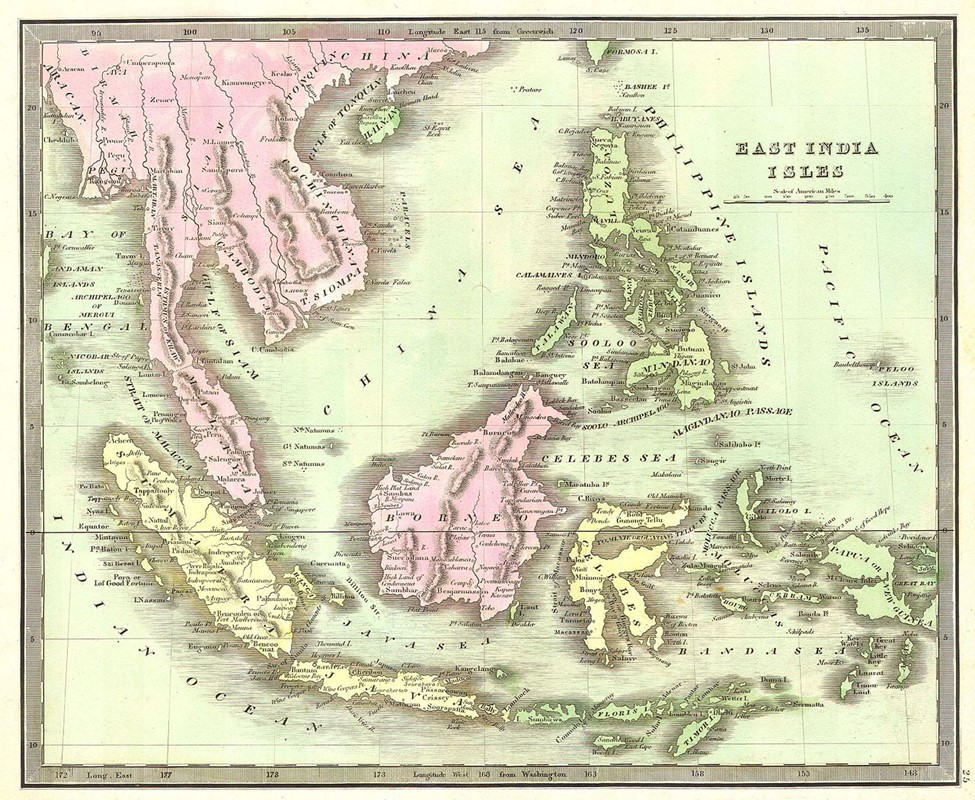|
|
||||
|
||||
This issue's topical Forum is devoted to exploring world history processes at work in Southeast Asia, a region once neglected by world historians, who regarded as a mere crossroads between India and China. Though Indonesia has more Muslims than any other modern nation, historians have often overlooked the role Southeast Asian Islam has played in world history. Because many states in the region are considered small, some modern world historians have often shied away from them as subjects of world historical analysis.
More recently, the use of ground penetrating radar (LIDAR) has led to a re-appraisal of the region’s place in premodern history, while the diversity of its colonial experiences and resistance movements offer case studies that are expanding, that is, where they are not undermining, established theories of colonial, and post-colonial societies. Recognition of the trans-regional importance of the region’s diverse Muslim population has grown, as has the understanding of the power of local agency in determining its affairs from the earliest days of Western penetration to the present. The articles in this Forum identify this shift in interest and will, it is hoped, add to the growing understanding among world historians that Southeast Asia offers valuable opportunities to see world history processes at work, to develop new paradigms, and to discover new ways to share the human experience in the classroom.
The first article, by Jennifer Gaynor, raises the spectre of approaches to non-European history that begin with a European “discovery,” a dated concept that nonetheless survives in textbooks and even in research regarding Southeast Asia. Underscoring in this way the importance of precolonial history, it then closely examines how nautical interactions in maritime Southeast Asia and in transnational Asian spaces built networks that seeded social and political systems from the earliest times to the early modern era. This approach to the intra- and interregional past focuses on the agency of Southeast Asian mariners and relations among polities, into whose dynamics newcomers stepped, and it thereby encourages us to rethink maritime Southeast Asia’s place in world history.
Barbara Watson Andaya undermines the tendency to isolate South and Southeast Asia by offering a comparative examination of the gendered politics of the trans-regional Islamic South and Southeast Asian Worlds, while Ethan Hawkley traces the joint rise of Islam and modernity in Southeast Asia through the stories of influential Muslims, thus addressing two very current topics in world history: research into non-European modernity and teaching with biography. These articles are followed by three studies devoted to trans-regional commerce: Robert Y. Eng utilizes both the concept of “Water Frontiers ”2 and James C. Scott’s controversial paradigm of borderland frontiers (Zomia)3 to help establish the manifold significance of Chinese settlements in Southeast Asia; David R. Saunders reveals the active role of Sabah in the region’s larger commercial networks; and Rila Mukherjee challenges the received wisdom regarding the importance of Melaka by testing it against the realities of the Bay of Bengal’s trade with that entrepôt, an effort akin to Gaynor’s questioning of the assumed importance of the impact of Portuguese conquest of Melaka.
The confluence of art, literature, and politics are the subjects the next two articles. Jack A. Yeager illuminates the lived experience of 20th Century world history—including generational conflict, sexual and ethnic identity, anti-colonialism and revolution—through examples of Vietnamese literature in French (and in their English editions). John Michael Swinbank then analyses how French Indochina’s leading fine arts institution, the École supérieure des Beaux-arts de l’Indochine, unwittingly, and now famously, trained the major artists of the Vietnamese revolution. His work then probes deeper, into the cultural and technical origins of Vietnamese revolutionary visual communication.
The Forum concludes with one of the best of John Maunu’s (the journal’s Digital Resources editor) topical annotated digital guides to resources in world history that here offers support for research and teaching approaches to Southeast Asia in world history from the arts to women’s issues, in addition to those resources found in the articles themselves. It opens with reference to an open-access, classroom-ready article by Craig Lockard that identifies several key themes that can serve as a means of integrating Southeast Asia into any world history course as more than of marginal importance.
The brief biographies of the contributors to this Forum to be found at the end of their articles establish that it is the collective work of senior historians, seasoned scholars, and recent holders of advanced degrees just embarking on their careers. While diverse in experience, they all are engaged in the same project. They seek to heighten interest in the place of Southeast Asia in world history by “giving up the ghost” of Eurocentric approaches to better illuminate its trans-regional religious concerns, its ethnic and gender diversity, the complexity and synergy of its social, political, and commercial networks, and the resilience of the region’s people as expressed in their art and literature. It is hoped that this Forum will serve to stimulate the giving up of such ghosts in the world history historiography of Southeast Asia and elsewhere.
Marc Jason Gilbert is the Editor of World History Connected and a past President of the World History Association. He has convened academic conferences and conducted teaching workshops addressing the subject of this Forum in Cambodia, Vietnam and the United States. His publications on Southeast Asian history range from 17th Century trade and politics to the international dimensions of the 20th Century wars in Indochina. He can be contacted at mgilbert@hpu.edu.
